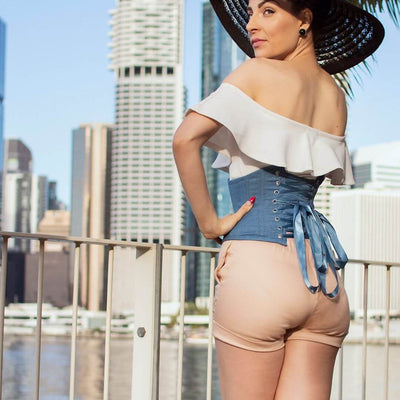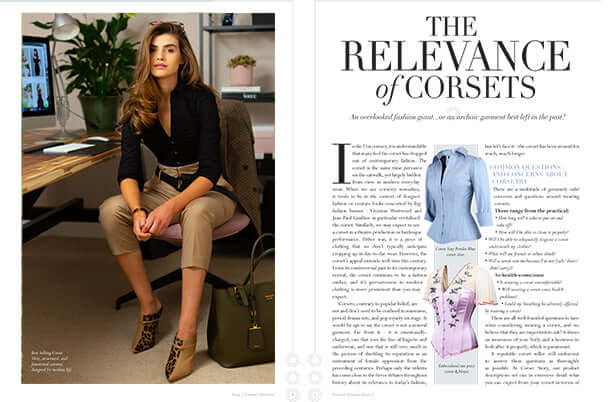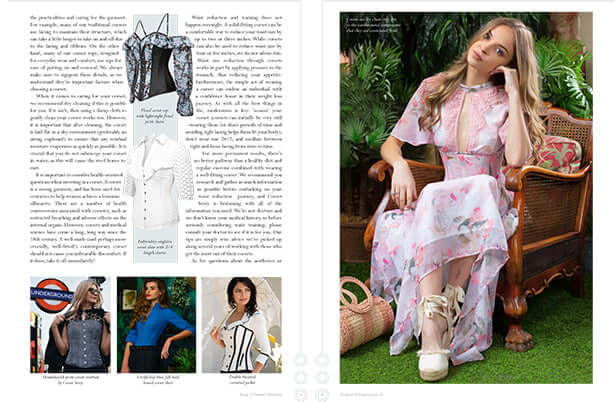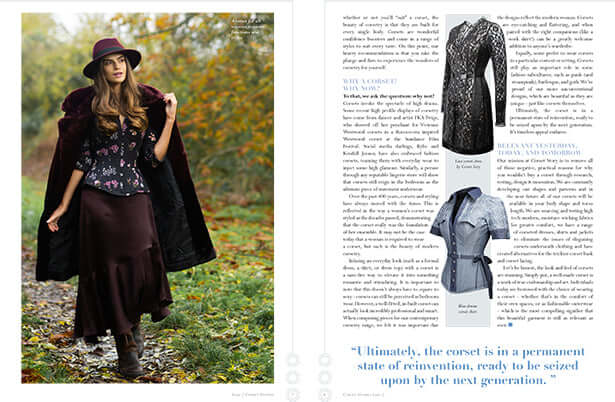How to Season your Corset with Corset Story
Want to know more about how to season your corset?
Whether you want to find out more about what corset seasoning is, or you want to know exactly how to do it, our guide will provide you with everything you need to know when it comes to how to season your corset...
Corset seasoning might be a term that you’re already familiar with, if you are a wearer of corsets. For others, corset seasoning might be completely unknown territory. Either way, whether you plan on wearing a corset regularly or just from time to time, understanding exactly what corset seasoning is and how to do it is essential. Read on to discover what corset seasoning is, and how to season your corset for yourself.
Corset Seasoning Explained
Seasoning essentially refers to ‘breaking in’ your corset, much like you would a pair of new shoes. Seasoning is carried out slowly, and over time will ensure your corset becomes more comfortable and better fitted to your shape. This process allows the steel bones within the corset to slowly mould to your shape. Doing this will ensure your corset fits like a glove and will help it stand the test of time as you will be putting less pressure on the bones and fabric.
In addition, seasoning also gives your body time to adjust to your new corset. As much as corsets can be moulded to suit our shape, they do of course also shape our bodies too. Corsets are structured and designed to pull the body in in specific places, meaning that as your corset moulded to your shape, your body is also going through an adjustment period. This is why it’s important to go through the seasoning process, to avoid putting any unnecessary strain on your body or your corset.
Getting Started with Corset Seasoning
Slow and steady wins the race when it comes to corset seasoning. If you’re learning how to season your corset for the first time, make sure you’re confident in what you are doing before you get started, to avoid causing any discomfort to yourself or putting any unnecessary strain on your corset. This guide will provide you with everything you need to know when it comes to corset seasoning.
Seasoning your corset means wearing it in, which translates to wearing it for a short period of time and often. When you first start wearing your corset, avoid lacing it too tightly as this will defeat the object of seasoning it in the first place. Your corset should fit snugly, but it shouldn’t in any way be uncomfortable. It should feel like a gentle hug might, rather than an overpowering grip. You can test to check you haven’t laced it too tightly by simply sliding several fingers in at the top or bottom of your corset - if you can’t do this, it’s too tight.
During seasoning, it’s important to wear something under your corset. This will make the entire process of seasoning more comfortable for you, and will also deliver better end results. A corset liner is perfect for this.
For the first few times you wear your corset, keep it on for just an hour or two each day. You can increase this slowly over time, until your corset is ready to be worn all day long. You should aim to season your corset over the course of around 14 days - building up from 1-2 hours per day to 6 hours of wear per day. Do note that the type of corset you are seasoning might need more or less time - for example. lightweight/mesh fabrics might need less time, whereas heavier fabrics such as brocades might require more time.
When you first wear your corset, after 30-45 minutes you can tighten it a little, and can continue to do so throughout the seasoning process.

Finding Your Fit
While corset seasoning is great to help you get the perfect fit, choosing the correct size and style corset in the first place is important too. The closer your corset is to your natural shape in the first place, the better it will fit both before and after seasoning.
Measuring yourself correctly is key.
Your Bust:
Measure around the fullest part of your bust, which is usually your nipples and around your back.
Your Waist:
Measure all around the narrowest part of your waist below your rib cage. To find the narrowest part below your ribs, lean from side to side and place your finger where your torso is bending.
Your Hip:
To locate where to measure your hip, lift your leg when standing and feel with your finger where the bone articulates into the pelvis. It is close to the fullest part of your hip and the tape measure should go around the top of your bottom. Do not measure your high hip.
Your torso length:
This is a vertical body measurement. Whilst standing measure straight down from your underbust to the same hip articulation point where the bone articulates into the pelvis. Ensure that your back is straight. You can also do this measurement when seated on a hard chair with a straight back and good posture to double check the measurement. Measure straight down from your underbust to the same articulation point where the crease is at your lap. Compare your torso length with the Princess / Bust seam length of your corset. If the corset Princess / Bust seam length is too long it may be uncomfortable when seated and you may need to choose a style suitable for a shorter torso. For an Overbust Corset the Bust seam length can give you an idea of how much bust coverage that you should get with a specific neckline.
Our corset size guide provides all of the information that you need to find your perfect fit so that you can be confident after seasoning that your corset will fit like a glove.
If unsure about what style or size to choose, we are always happy to help: Contact Customer Service






